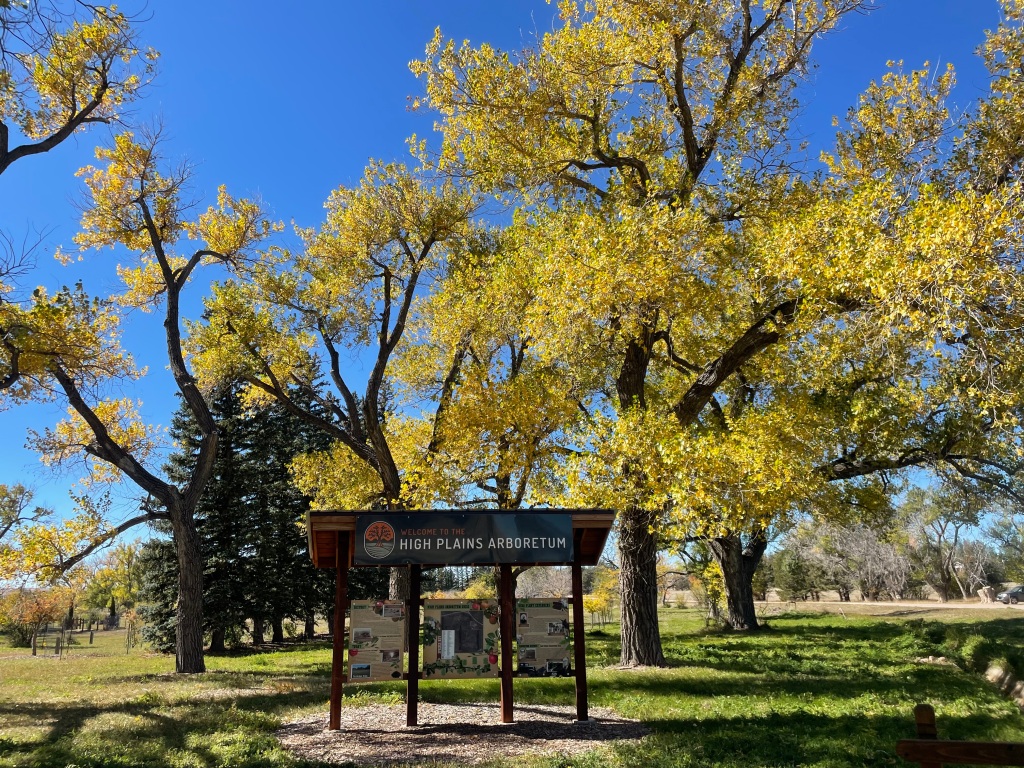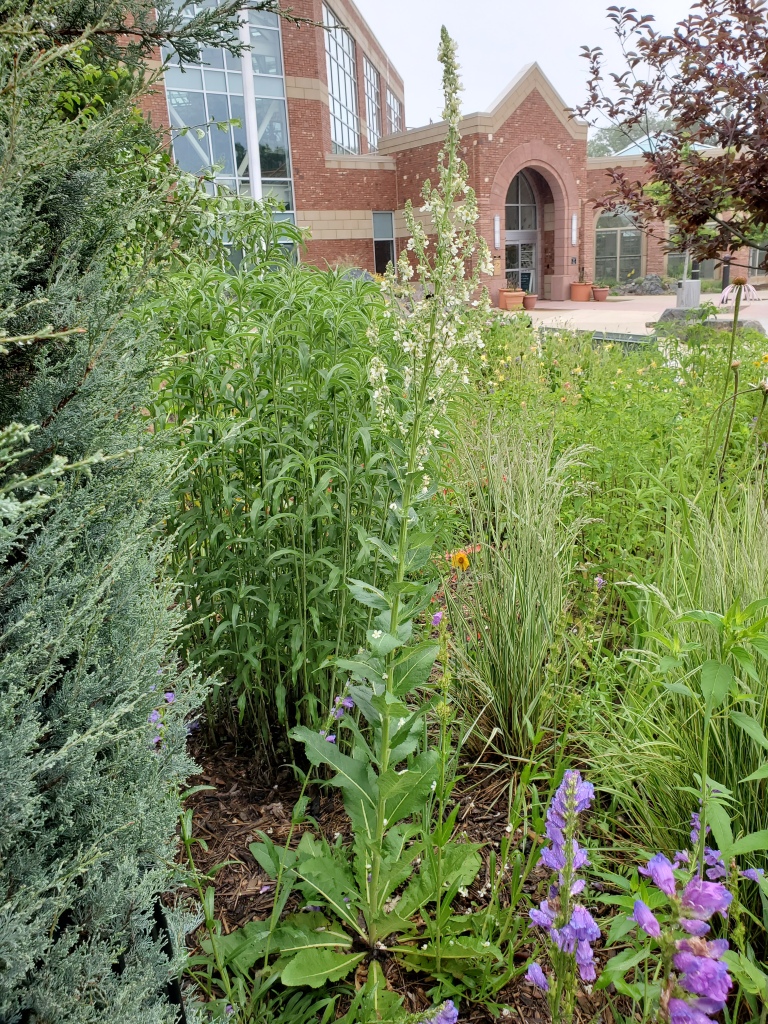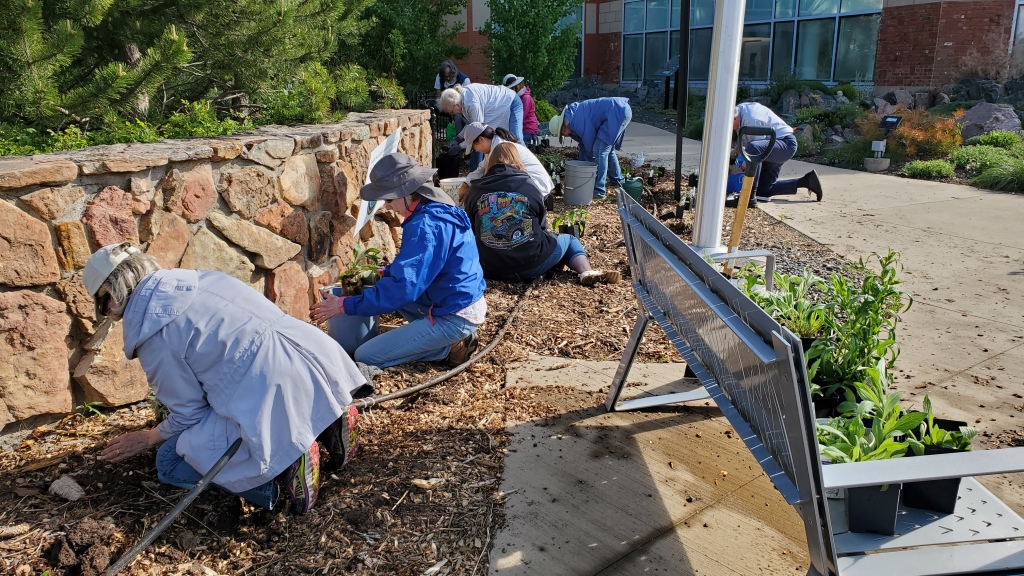
New horticulturist joins Laramie County Extension team
Published April 19, 2024, in the Wyoming Tribune Eagle
By Barb Gorges
I’d like to introduce you to the new University of Wyoming Extension horticulturist for Laramie County, Hannah Morneau.

Catherine Wissner, the previous horticulturist, retired last June, and the Laramie County Master Gardeners found themselves on their own for teaching this winter’s Master Gardeners 60-hour, 10-week class. Luckily, Hannah, who is also a Master Gardener, started her new job about the time the class started so she could absorb the same local knowledge as the 30 students.
The growing season will be Hannah’s busy time. Farmers, ranchers, gardeners and homeowners will all have plant questions. Sometimes she can forward those to Master Gardeners with expertise in a certain area that might call for a yard visit (Catherine always sent me the bird questions). Or maybe emailing a photo for plant ID or plant pest or disease ID will work.
In addition to detective work, the county extension horticulturist can make recommendations for not only solving problems, but avoiding them, such as recommending what to grow. For years, I’ve enjoyed the perennials recommended to my neighbor across the street for their front yard.
Besides Master Gardeners, Hannah will also be working with 4-H and other educational programs for youth and adults.
This is not Hannah’s first time working in Cheyenne. She was a summer intern for the Cheyenne Botanic Gardens in 2021, in the Children’s Village, for a combination of gardening and teaching experiences.
Hannah grew up on her family’s cattle ranch outside Lander, Wyoming. But she was more drawn to growing produce, preserving it and selling the excess at the farmer’s market.
Her first job on her resume is three years working at Sprouts Greenhouse outside Lander, a full-service garden center that grows most of the plants it sells.
Next, Hannah headed for Sheridan College, where she received an associate’s degree in horticultural science. While there, she was an intern for Rooted in Wyoming, which describes itself as a developer of “school and community agricultural projects to directly improve access to locally grown food for Wyoming families.”
Overlapping that experience, Hannah also worked at the Sheridan Research and Extension Center, one of four centers operated by the University of Wyoming in locations around the state.
Then it was on to the University of Wyoming for a Bachelor of Science in Agroecology and Rangeland Ecology and Watershed Management. While in Laramie she worked on campus at the Rocky Mountain Herbarium and the Williams Conservatory.
After a summer at the Pitkin Forestry Nursery of the University of Idaho in Moscow, Idaho, learning about growing seedling trees and more about greenhouses, Hannah finished her time at UW as an undergraduate teaching assistant for the basic botany classes.
Her first job after graduation was with Harris Native Seeds in Bozeman, Montana, where she learned about the production of native grass and flower seed.
Hannah’s resume mentions she also knows her way around a variety of agricultural equipment and knows how to maintain them.
So, what we have in Hannah is a well-rounded horticulturist.
If you aren’t familiar with Extension, or at least not in Wyoming, you should visit the University of Wyoming Extension website: uwyo.edu/uwe.
You’ll find written materials and videos on all kinds of ag and home gardening and landscaping topics. Plus, there might be classes coming up. If you have kids, look into 4-H. Kids don’t have to live on a farm or ranch to take part—it’s not all livestock. Hannah is helping teach a 4-H vegetable gardening class this spring, from seedlings to fair entry preparation, and it might not be too late to sign up. Contact dawns@uwyo.edu.
Do you have a question for Hannah? The day I interviewed her, she had just been out consulting with a landowner about replacing a windbreak destroyed by one of the recent fires. While fire is usually good for prairie grasses, Hannah stressed being mindful of erosion and how important reseeding with native grasses is. And how important it is to be prepared for wildfires.
Hannah can be reached by phone at 307-633-4480 or by email at hmorneau@uwyo.edu.












